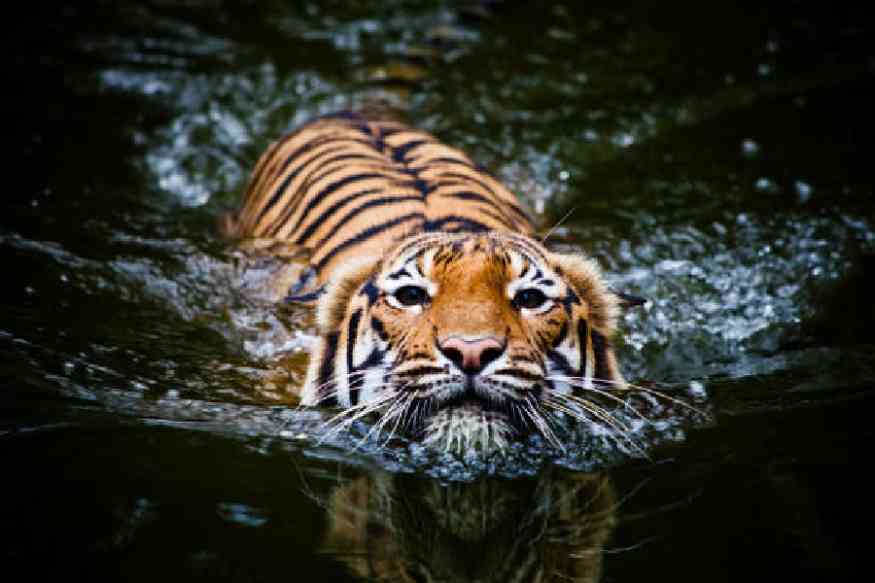Most apes and humans are not built for swimming or even floating.
The composition of the human body has a higher proportion of dense muscle tissues and bones. When the lungs are filled with air, all in all, a human being becomes less suitable for floating or swimming as compared to most other animals. Besides, a human’s ability to walk on hind limbs, also known as bipedalism, is a physical design that is in complete contrast to the horizontal, streamlined bodies of natural swimmers like dolphins or sharks.
Even among land animals, polar bears are considered one of the best swimmers due to their streamlined bodies and webbed paws that can be used for paddling. They are capable of covering upto 100 kilometres at a speed of 10 kilometres per hour in the cold Arctic waters. Other good swimmers include elephants, who can use all four legs to paddle, and the Royal Bengal tigers of the Sunderbans, that are known to swim in the rivers and creeks to cool off or hunt for prey.
In terms of physics, two principles come into play when humans or animals swim. First is buoyancy, also called upthrust, which is the upward force exerted by a fluid on an object that is partially or fully immersed in it. This force opposes the second factor, the force of gravity, which would otherwise drag the object to the bottom of a water body. Buoyancy is the reason one feels lighter or weightless when submerged in water and mastering it means one can swim effortlessly.
Anindya De, physics teacher at the Hindu School in Calcutta, says, “When one learns swimming, an understanding of the principle elucidated by the ancient Greek physicist Archimedes might help.”
“When you swim or float, your body displaces water, creating this upward buoyant force, which counteracts your weight, courtesy gravity, and helps you stay afloat,” adds De.
Objects float in water if they’re less dense than the water they displace. Density is a measure of how much mass is packed into a given volume. If an object is less dense than water, it will float because the buoyant force exceeds the gravitational force pulling it downward.
Specific gravity (in water) is a useful measure of the capacity to float. It is equal to the weight of the object divided by the weight of an equal volume of water. For example, if a person weighing 99 kilograms displaces 100 kilograms of water when fully immersed, the specific gravity of the individual would be 0.99. The volume of the person above the surface would weigh 1 kilogram. Because of varying densities within the human body, it is not possible to determine the percentage of volume of the swimmer that will be above water.
In humans, the prominent constituent matters are bone, muscle, fat, air in the lungs and other structures, and fluids (such as blood). The proportion of these substances in an individual’s make-up determines the specific gravity, the ability to float and the characteristics of floating.
In the human body, the centre of gravity (CoG) — the point through which the gravitational force acts — is usually located roughly near the belly button. And the centre of buoyancy (CoB) is usually located near the lungs with all that air in them.
“When people swim, they unwittingly align the CoG and CoB vertically so that the body is in equilibrium and floats horizontally,” says De.
Cini swimming trainer Mriganka Mouli Das adds, “The trick is to learn to remove the CoG and use CoB to your advantage through training and practice.”










